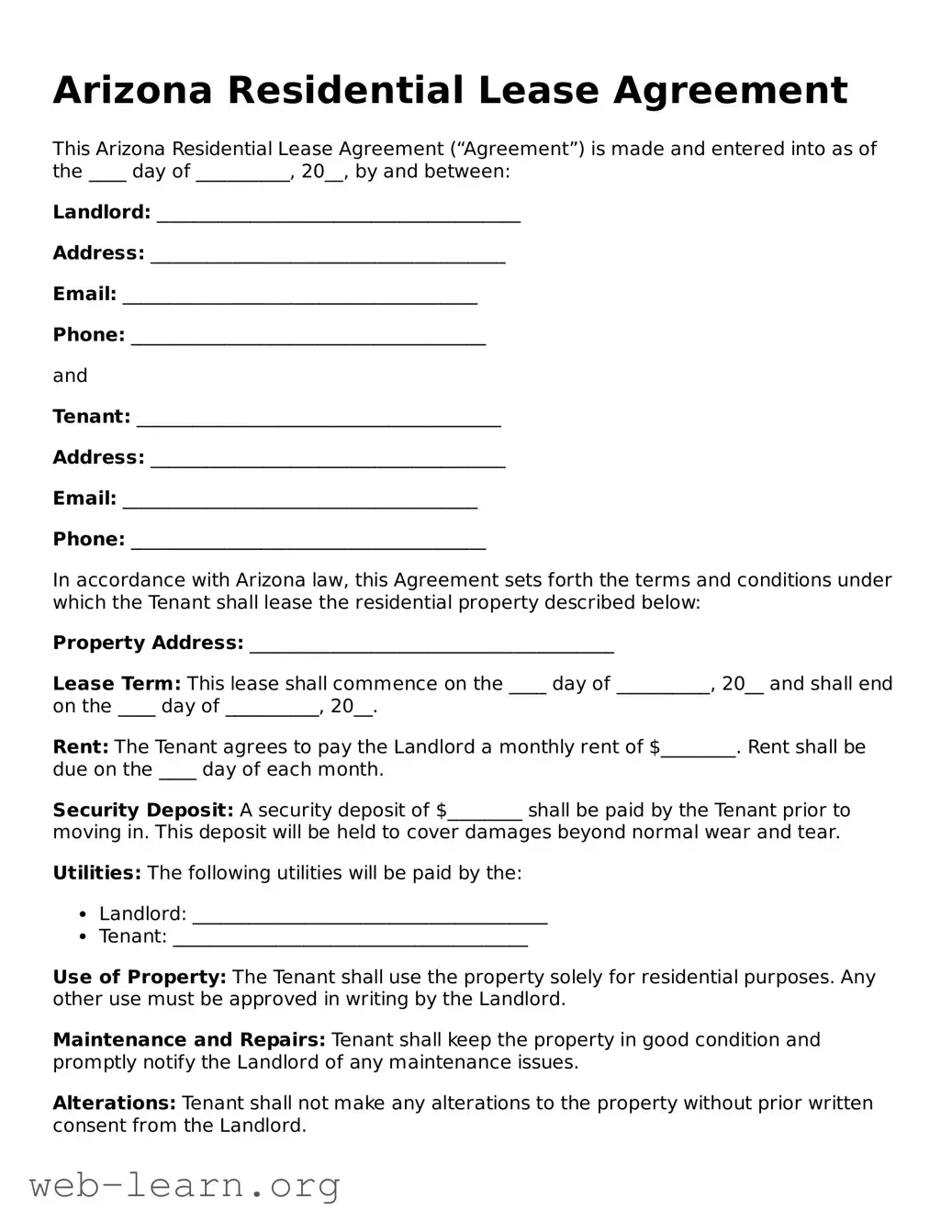Arizona Residential Lease Agreement
This Arizona Residential Lease Agreement (“Agreement”) is made and entered into as of the ____ day of __________, 20__, by and between:
Landlord: _______________________________________
Address: ______________________________________
Email: ______________________________________
Phone: ______________________________________
and
Tenant: _______________________________________
Address: ______________________________________
Email: ______________________________________
Phone: ______________________________________
In accordance with Arizona law, this Agreement sets forth the terms and conditions under which the Tenant shall lease the residential property described below:
Property Address: _______________________________________
Lease Term: This lease shall commence on the ____ day of __________, 20__ and shall end on the ____ day of __________, 20__.
Rent: The Tenant agrees to pay the Landlord a monthly rent of $________. Rent shall be due on the ____ day of each month.
Security Deposit: A security deposit of $________ shall be paid by the Tenant prior to moving in. This deposit will be held to cover damages beyond normal wear and tear.
Utilities: The following utilities will be paid by the:
- Landlord: ______________________________________
- Tenant: ______________________________________
Use of Property: The Tenant shall use the property solely for residential purposes. Any other use must be approved in writing by the Landlord.
Maintenance and Repairs: Tenant shall keep the property in good condition and promptly notify the Landlord of any maintenance issues.
Alterations: Tenant shall not make any alterations to the property without prior written consent from the Landlord.
Termination: This lease may be terminated by either party with a written notice of ____ days prior to the end date of the lease.
Governing Law: This Agreement shall be governed by the laws of the State of Arizona.
IN WITNESS WHEREOF, the parties have executed this Agreement on the day and year first above written.
Landlord Signature: ________________________ Date: _____________
Tenant Signature: ________________________ Date: _____________
